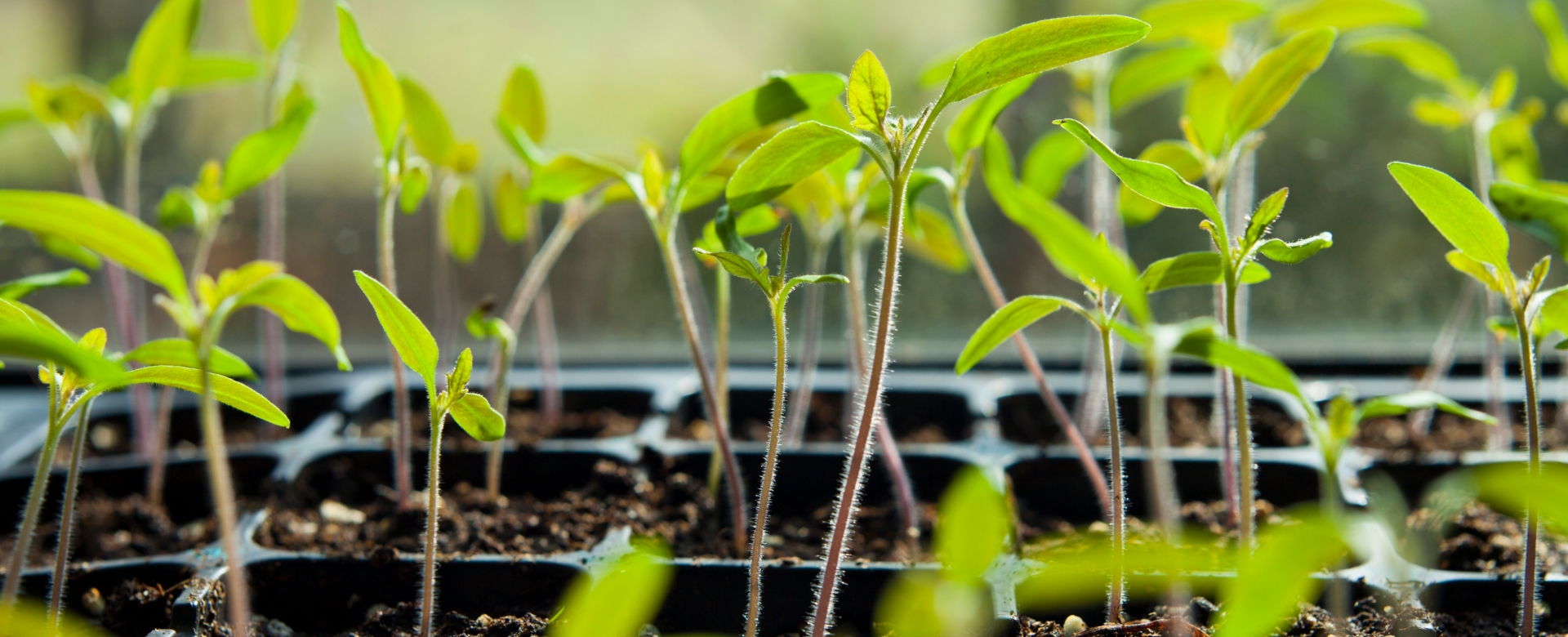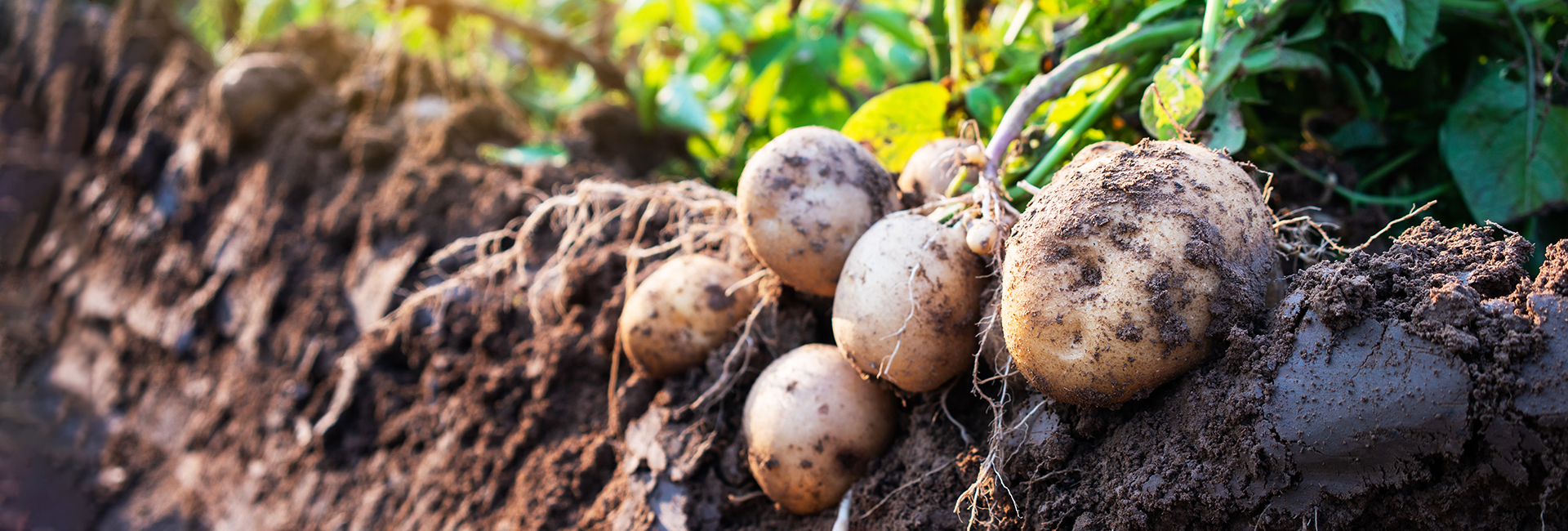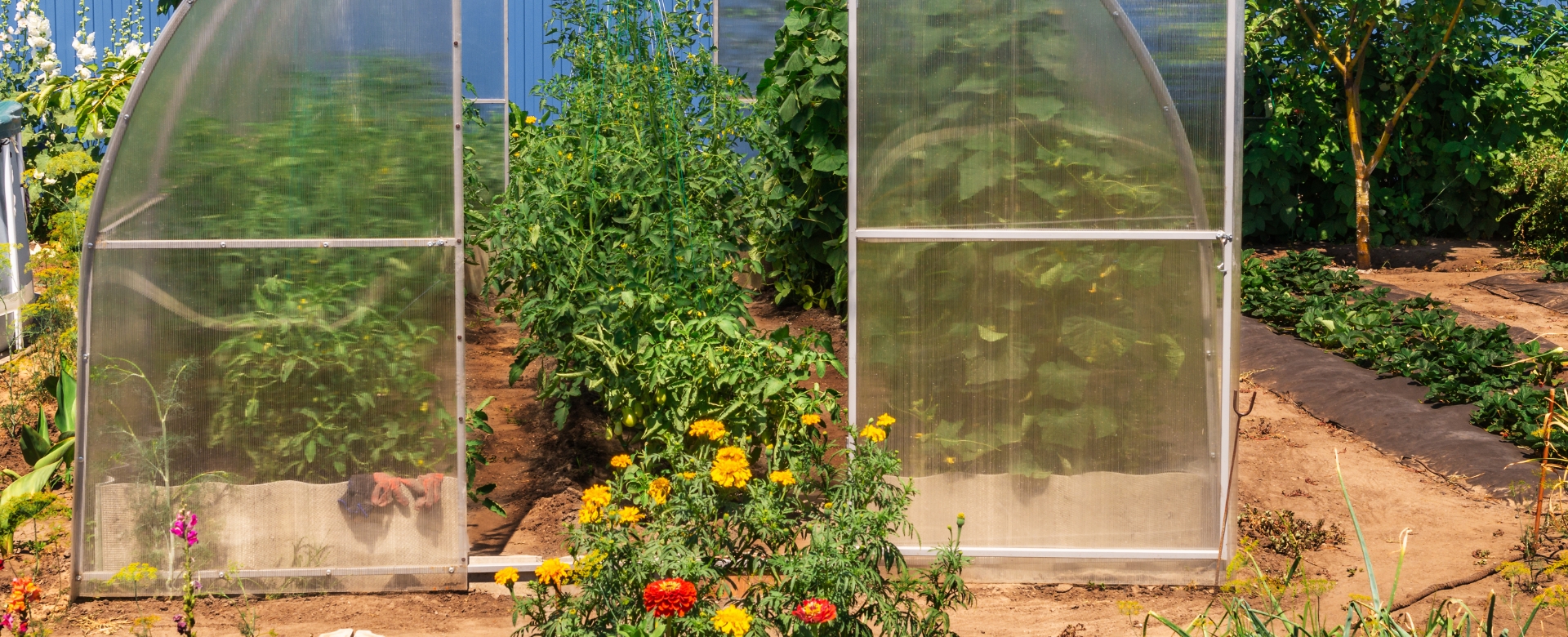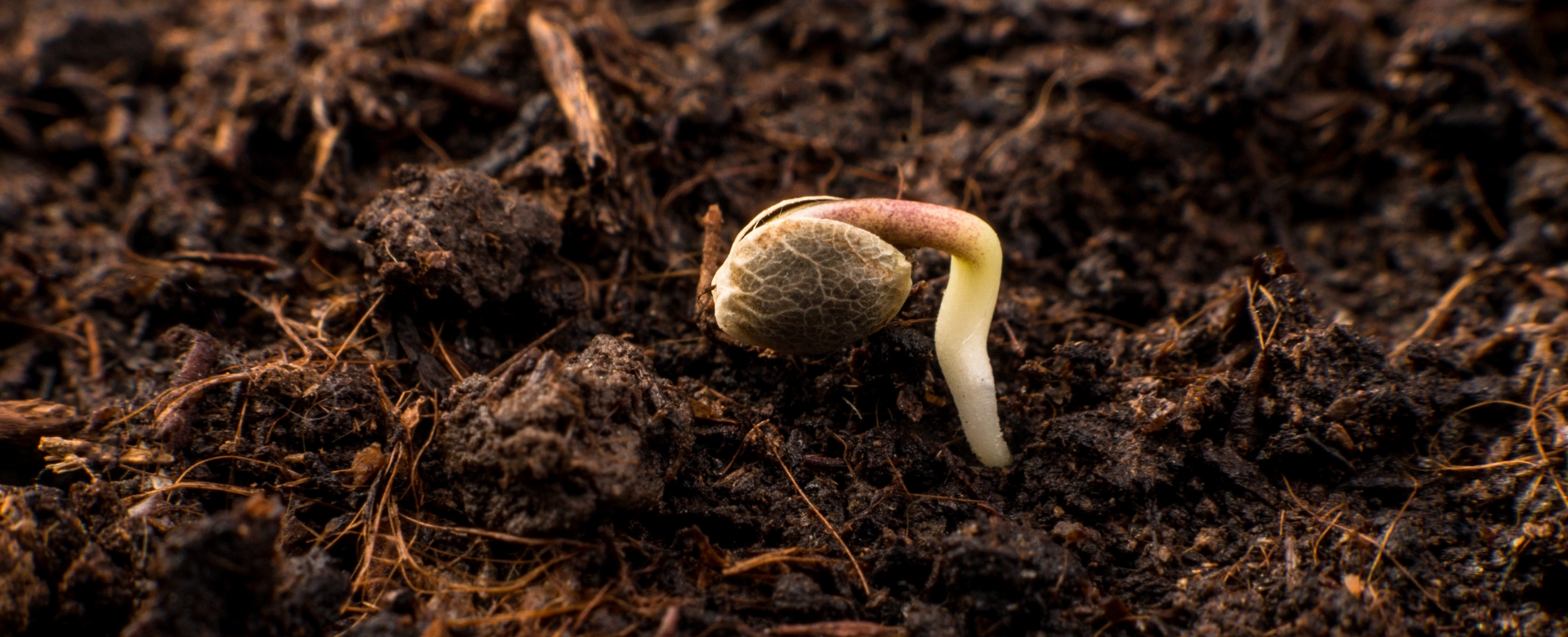I love starting seeds, especially for long-season, heat-loving plants like peppers and tomatoes.
Not only does it give me something to do in late winter, but it really helps extend the growing season. (Which is why I recommend seed starting in Zone 5.) I’ve perfected my seed-starting methods over the years, but when I first started, I constantly had issues with leggy seedlings.
What are leggy seedlings?
The telltale sign is a seedling that grows too tall too quickly. As a result, the seedlings stems get “leggy” or “spindly”, and they begin to lean over towards a light source.
This causes a few problems. First, the plants’ stems aren’t strong, and they become susceptible to wind damage once transplanted outdoors. In the worse cases, their weak stems may succumb to damping off, and all your seedlings die suddenly.
But here’s the good news. You can fix leggy seedlings in a few simple steps. Keep reading to learn exactly what to do if your seedlings are falling over.
What Causes Leggy Seedlings?
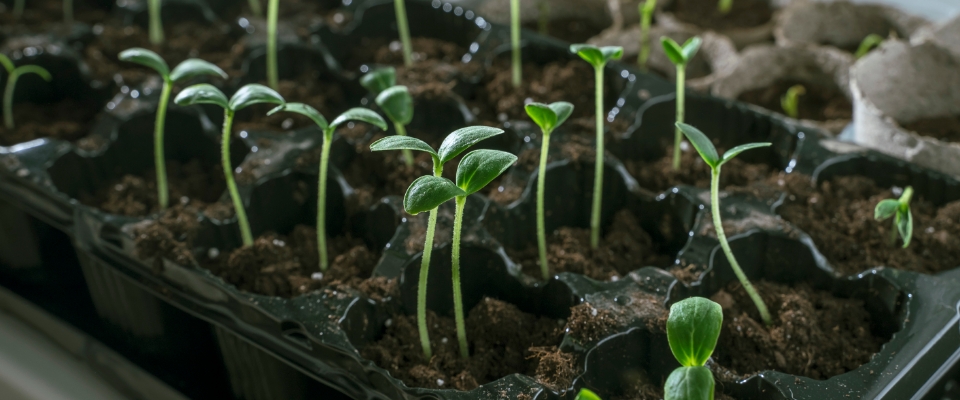
The No. 1 cause of leggy seedlings is a lack of light. They feel the heat of the light, but not enough corresponding light. And so, they go in search of the light source.
So, to fix the issue, you need to increase the amount of light.
How do you do that? Really, it depends on your light source. Here are some tips for:
Using Grow Lights
Leggy seedlings under grow lights means the light isn’t close enough. The seedlings grow taller to get nearer to the light.
First, move the lights closer.
LED grow lights don’t emit heat, and therefore, you can place them very close to your seedlings. Position the light about 2-3 inches over the top.
Second, adjust the intensity of the light.
Some artificial grow lights allow you to increase the intensity. When you move the lights down, adjust the intensity down to about 30%. Then, gradually increase the intensity of the light to allow your seedlings time to adjust.
If you can’t change the intensity, place them as close as you can without heating up the tender leaves.
Using Windowsill Light
If you start seeds in a windowsill, you might see that they start to lean toward the window. This means they’re not getting enough light.
In this case, first consider a different windowsill. A south-facing window will get the best direct sun.
Next, consider amplifying the light. You can create a simple reflector with tin foil. This will maximize light and reflect it back to the plant.
Other Causes of Seedlings Falling Over
If your seedlings are getting plenty of light but are still falling over, investigate these causes:
1. They’re too hot
Heat and humidity are important for seed germination. However, once the seed emerges, too much warmth will trigger the plant to go looking for light.
Therefore, as soon as the seed emerges, you need to reduce heat.
Remove a greenhouse dome (which increases humidity and heat) and/or a heating mat, if you’re using one.
2. They’re too dry
A problem with high heat and artificial light – your seedlings will dry out quicker. And this can cause issues with weak, skinny stems.
The reason is that seedlings require water to carry nutrients. When the soil is dry, your seedlings begin to starve, because there is not adequate water pressure to carry nutrients into the stem and leaves.
Generally, bottom watering is best, especially if you’re using seed starting peat pellets. However, you can water them from the top; just ensure there are no water pools, which can cause damping off.
Alternative. Overwatered seedlings can also grow spindly. Aim to not waterlog your seed starting pods. They should be moist like a wrung-out sponge.
3. They’re too crowded
Every gardener hates thinning seedlings. This is the process of keeping your healthiest seed start and removing the weaker ones (even if they’re healthy).
But thinning is necessary. Crowded plants fight for light and nutrients.
Therefore, if your seedlings are crowded, they’ll start competing for light and try to outgrow their nearest seed pod neighbors.
Pro Tip. Thin seedlings as soon as they have 1 or 2 sets of true leaves. This provides enough time to identify the strongest seed start.
You Have Leggy Seedlings… Now What??
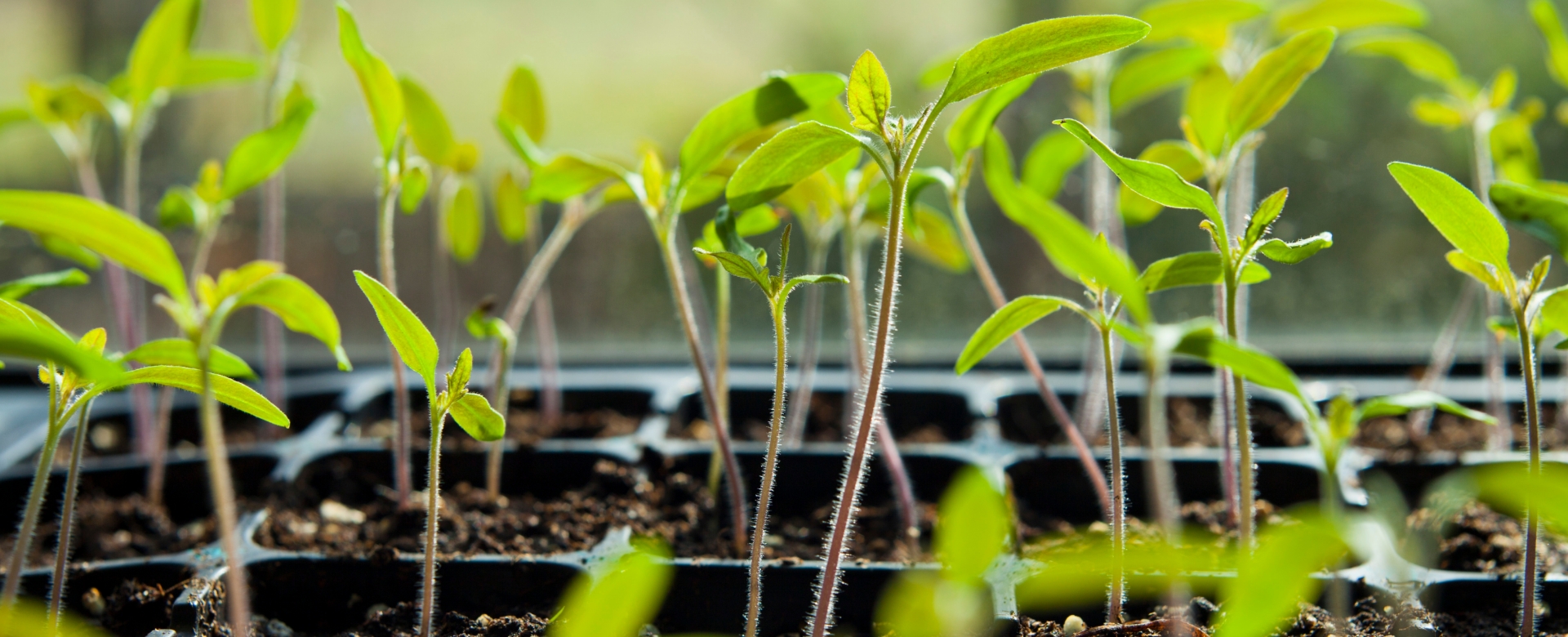
What can you do to fix seedlings that are falling over? In the most drastic cases, it might make sense to start over.
For example, if your seedlings have grown into a messy spiderweb of spindly stems, you might be better off with a clean start. However, if you’re just starting to notice it, there are ways you can save them.
Step 1: Increase the Light
This tends to be the easiest step. Start by moving the light closer (if using grow lights). You can keep it about 2-3 inches from the top of the leaves.
You can also make a simple reflector for both light- and windowsill-grown plants. Here’s a good tutorial on that process:
Step 2: Use a Fan
Using a fan to circulate air provides two important benefits:
1. A fan mimics the wind, encouraging your plants to grow stronger root systems and stems.
2. Air circulation reduces humidity and heat, and helps you reach an ideal growing temperature (about 65 to 75 degrees Fahrenheit).
Don’t have a fan? Another process you can use is to stroke the seedlings with your hand. If you can do this a couple times per day, it can help to encourage stronger growth.
Step 3: Get the Temperature Right
As soon as the emerges, reduce humidity and heat. A seed starting dome, for example, should be removed as your first seeds start to emerge.
Additionally, remove any heating mats, if you’ve used one for germination.
A fan will help with this too. If you’re using artificial grow lights, stick with LEDs or florescent bulbs. This will reduce the amount of heat produced, helping you to avoid high temperatures.
Step 4: Bury Your Seedlings
Some plants can be revived by burying them deeper in the soil. This is because they can develop adventitious roots, which are tiny root-like structures that can develop along the buried stem.
Plants with a fuzzy stem generally can be buried deeper. Some examples include nightshades like:
- Tomatoes
- Peppers
- Eggplant
And some brassicas benefit for slightly deeper plantings including broccoli seedlings and Brussel sprouts. For your nightshades, bury the plant just below the first true leaves, and you’re set.
Pro Tip. Not all seedlings can be buried deeper. Seedlings with shallow root systems or those that are prone to rot (like lettuce or spinach) should not be buried when transplanting.
Step 5: Hydrate Your Plants
Adding light and a fan is beneficial, but it can also dry out your seedlings. So, stay on top of watering.
One tip: Use a specially formulated seed starting mix soil. This will help you retain moisture as your plants begin to grow.
Also, if you’re using lights just about your plants, consider bottom watering, which can help you maintain adequate water.
Step 6: Start Over
This is only reserved for extreme cases. You can fix most leggy seedlings. But if you notice:
- Stems are paper-thin and weak
- Pale or stretched thin leaves
- Physical damage (like a broken stem)
- Signs of maturation (e.g., budding or flowering)
In these cases, it might be too late. You can try the above methods, but if you can’t revive them, it’s probably best to compost and start again.
Leggy vs Normal Seedlings

Try to catch spindly seedlings early. The faster you start remediation efforts, the better your success will be. Here are some signs of leggy seedlings:
| Feature | Leggy Seedling | Normal Seedling |
|---|---|---|
| Stem | Thin, weak, and pale | Thick, sturdy, and green |
| Height | Excessively tall and stretched | Compact and proportionate to stem thickness |
| Leaves | Pale and stretched thin | Deep green, healthy size, and spaced evenly |
| Leaf Position | Drooping or weak | Upright and perky |
| Root System | Less developed and shallow | Well-developed and extensive |
| Overall Appearance | Weak and spindly | Strong and upright |
Wrapping Up
Leggy seedlings are a pain, especially if you’ve invested a lot of time and resources in a seed starting station.
But generally, it’s a temporary problem. You only need to hold on for a few weeks until you can move your plants outdoors, anyway. So, if you notice your seedlings are falling over, follow the steps above.
You’ll be able to fix the issue in most cases, or at the least, slow the growth rate. Once moving spindly seedlings outdoors, I’ve had plants make a full recovery (and in some rare cases), I’ve staked them for added support.
But if there’s one takeaway it’s this: Leggy seedlings happen. Seed starting is a natural process, but doing it indoors is unnatural. Getting the conditions just right requires experimentation. So, experiment, have fun, and you’ll become a seed-starting master along the way.
Visit your local Homegrown Outlet location for organic gardening supplies. We offer a range of gardening tools, soils, nutrients, indoor grow kits, and more.

